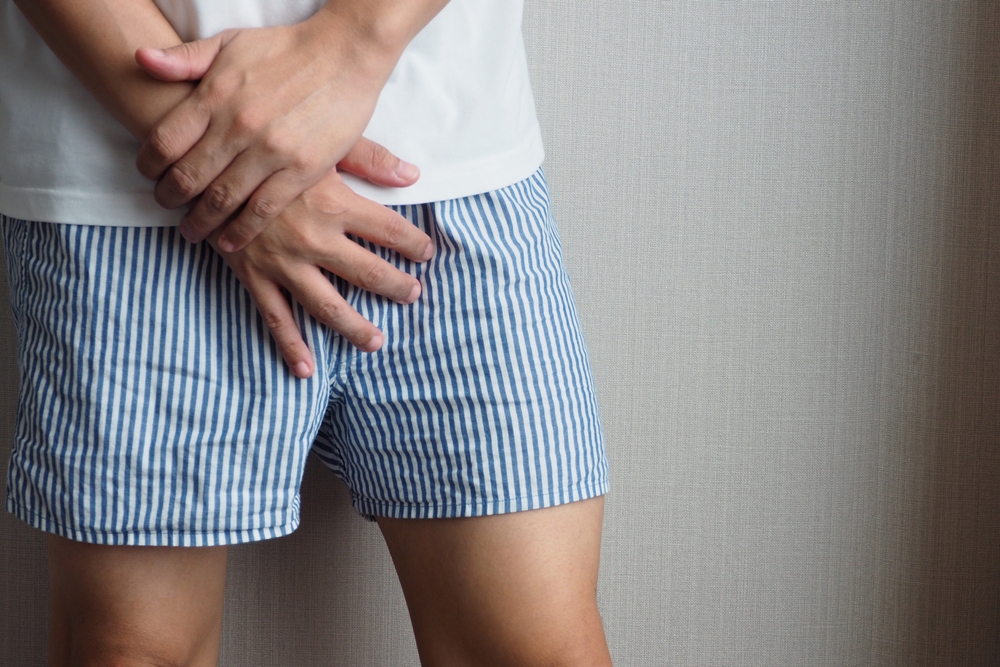Lower Urinary Tract Symptoms in Men
Medically Reviewed by Dr Mira GATES
Last updated on 20.10.2021
What are Lower Urinary Tract Symptoms?
‘Lower urinary tract symptoms’ are symptoms related to passing urine and are common in men as they get older. Lower urinary tract symptoms can be classified into either storage symptoms (having to urinate too often) or voiding symptoms (having difficulty with the flow of your urine). The most common cause of lower urinary tract symptoms in men is an enlarged prostate gland.
Lower Urinary Tracts Symptoms include
- Hesitancy – despite the feeling of needing to urinate, the urine flow doesn’t start immediately.
- Weak or intermittent stream – urine flow starts and stops
- Straining to start /or continue urination
- There is dribbling after urination
- A feeling of incomplete emptying of the bladder
- Having to go to the bathroom very often. Particularly noticeable at night eg, having to get up to pass urine (> 2 times in the night)
What will the doctor be looking for?
The main reason to discuss these symptoms with your doctor is to rule out significant underlying conditions such as an infection, kidney/bladder stones or tumours. Also, if the prostate gets too large, urine flow can become badly blocked, which can lead to complications such as injury to the bladder or kidneys.
Many other medical conditions and lifestyle choices can affect the lower urinary tract and may need to be investigated by your GP. Conditions such as diabetes, obesity and high blood pressure can contribute to lower urinary tract symptoms.
Likewise, bladder irritants such as smoking, caffeine, alcohol intake and certain food choices cause or contribute to symptoms.
What tests will I need?
Usually your GP will order a few tests. These may include:
- Urine tests
- Blood tests
- Imaging of the urinary system
- Testing of urinary flow
Men with LUTS may be advised to have a ‘digital rectal exam’ to assess the prostate gland. This is a common part of a male health check- the doctor inserts a gloved, lubricated finger into the rectum. This is so the doctor can can feel the wall of the lower bowel, determine the size of the prostate, and check for any bumps or abnormalities.
A digital rectal examination doesn’t require any special preparation, and takes a few seconds to complete. It’s usually painless, but it may feel uncomfortable, particularly if a prostate or rectal condition is present.
What treatment options are there?
Treatment options include:
- Lifestyle changes (for example, managing fluid intake, weight loss, avoiding triggers)
- Medications (to shrink/ slow the growth of the prostate and/or relax the urinary system muscles to allow urine to flow more freely)
- Surgery (to remove excess prostate tissue to allow urine to pass)
If you think you have lower urinary tract symptoms, speak to your doctor.
https://www.nps.org.au/australian-prescriber/articles/drugs-for-benign-prostatic-hypertrophy)
https://urologyaustin.com/general-urology/lower-urinary-tract-symptoms/)
https://www.racgp.org.au/download/documents/AFP/2011/October/201110arianayagam.pdf


ACL injuries & tears
ACL injuries & tears The knee has two ligaments inside the joint, that stabilise it when we are moving forwards or backwards. These are called the anterior and posterior cruciate ligaments. The anterior cruciate [...]
What is a fractured penis?
What is a fractured penis? Although the penis doesn’t have a bone in it, it can be fractured! A fractured penis occurs when the spongy tissue that swells during [...]
Could your home be causing asthma and allergies?
Could your home be causing your Asthma? Overview Our homes are not just a roof over our heads- they play a key role in our health, particularly when it [...]
How to fix an ingrown toenail
How to get rid of an ingrown toenail What is an ingrown toenail? Ingrown toenail is an extremely common condition which occurs when the inner or outer side of [...]
On a vegan diet?- some important things you should know
Vegan diet- a beginner's guide What is a vegan diet? A vegan diet, also known as plant-based, describes one that avoids any animal products. There are many subtypes of [...]
How to get rid of Jock Itch
How to get rid of Jock Itch What is Jock Itch? Jock Itch is a common name for the medical condition also known as "Tinea Cruris". Jock Itch is [...]









